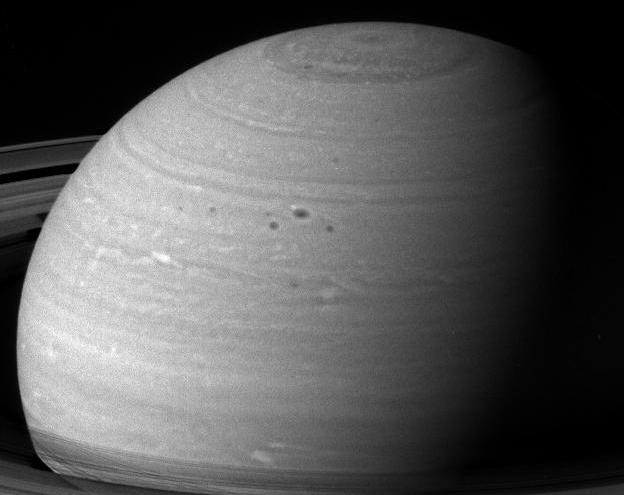| The Cassini-Huygens mission |
 Original image tif 288kB
Original image tif 288kB 
This close-up of Saturn's southern hemisphere shows several dark spots huddled in the mid-latitude region. The largest of these spots is about 3,000 kilometers (1,860 miles) across, or about as wide as Japan is long. Also visible are light-colored, lacy cloud patterns indicative of atmospheric turbulence. The image was taken with the Cassini narrow angle camera through a near-infrared filter on May 7, 2004, from a distance of 28.2 million kilometers (17.5 million miles) from Saturn. Image scale is 168 kilometers (104 miles) per pixel. The image has been contrast-enhanced to aid visibility.
The Cassini-Huygens mission is a cooperative project of NASA, the European Space Agency and the Italian Space Agency. The Jet Propulsion Laboratory, a division of the California Institute of Technology in Pasadena, manages the Cassini-Huygens mission for NASA's Office of Space Science, Washington, D.C. The Cassini orbiter and its two onboard cameras, were designed, developed and assembled at JPL. The imaging team is based at the Space Science Institute, Boulder, Colo.
For more information, about the Cassini-Huygens mission visit, http://saturn.jpl.nasa.gov and the Cassini imaging team home page, http://ciclops.org.
Image Credit:
NASA/JPL/Space Science Institute
[NASA/JPL/Space Science Institute]
 ALPO-Japan Latest
ALPO-Japan Latest

 Saturn Section
Saturn Section